-
GLOBAL ADVANCED SINTERING TECHNOLOGIES MARKET, BY TYPE 15
-
BY APPLICATION 16
-
GLOBAL ADVANCED SINTERING TECHNOLOGIES MARKET,
-
GLOBAL ADVANCED SINTERING TECHNOLOGIES MARKET, BY REGION 17
-
MARKET INTRODUCTION 18
-
DEFINITION 18
-
SCOPE OF THE STUDY 18
-
MARKET STRUCTURE 19
-
RESEARCH METHODOLOGY 20
-
RESEARCH PROCESS 20
-
PRIMARY RESEARCH 21
-
SECONDARY RESEARCH 22
-
MARKET SIZE ESTIMATION 22
-
FORECAST MODEL 24
-
LIST OF ASSUMPTIONS 24
-
MARKET DYNAMICS 25
-
INTRODUCTION 25
-
DRIVERS 26
- SURGE IN DEMAND FROM THE AUTOMOTIVE INDUSTRY
- GROWTH
- DRIVERS IMPACT ANALYSIS 28
-
OF THE AEROSPACE INDUSTRY 27
-
RESTRAINTS 29
- VOLATILE RAW MATERIAL PRICES 29
- RESTRAINTS IMPACT ANALYSIS
-
OPPORTUNITIES
- ROBUST
-
DEMAND IN 3D PRINTING APPLICATIONS 30
-
CHALLENGES 32
- HIGH CAPITAL COST AND COMPLEX TECHNOLOGY 32
-
MARKET FACTOR ANALYSIS
-
VALUE
- ADVANCED SINTERING TECHNOLOGIES MANUFACTURERS 34
- DISTRIBUTION CHANNELS 34
- END-USE INDUSTRIES
-
CHAIN ANALYSIS 33
-
RAW MATERIALS SUPPLIERS 34
-
PORTER’S
- BARGAINING POWER OF SUPPLIERS 36
- THREAT OF SUBSTITUTES 36
- BARGAINING POWER OF BUYERS
- INTENSITY
- PRODUCTION SCENARIO
- IMPACT
-
FIVE FORCES MODEL 35
-
THREAT OF NEW ENTRANTS 35
-
OF RIVALRY 36
-
IMPACT OF COVID-19 ON THE GLOBAL ADVANCED SINTERING TECHNOLOGIES MARKET 36
-
OF COVID 19 ON THE SUPPLY CHAIN OF ADVANCED SINTERING TECHNOLOGIES MARKET 37
-
SUPPLY 37
-
END-USE INDUSTRY 37
-
GLOBAL ADVANCED SINTERING TECHNOLOGIES MARKET, BY TYPE 38
-
INTRODUCTION 38
-
CONVENTIONAL PRESSURELESS SINTERING 39
-
HOT PRESSING 40
-
SPARK PLASMA SINTERING
-
MICROWAVE
-
SINTERING 41
-
OTHERS 42
-
GLOBAL ADVANCED SINTERING TECHNOLOGIES MARKET, BY APPLICATION 43
-
INTRODUCTION 43
-
AEROSPACE 44
-
AUTOMOTIVE 45
-
ELECTRONICS 45
-
ENERGY 46
-
INDUSTRIAL 47
-
MEDICAL 47
-
OTHERS 48
-
GLOBAL ADVANCED SINTERING
-
TECHNOLOGIES MARKET, BY REGION 49
-
INTRODUCTION 49
-
NORTH AMERICA 52
- US 53
- CANADA 54
-
EUROPE 56
- GERMANY 58
- RUSSIA 59
- UK 60
- FRANCE 61
- ITALY 62
- NORDIC 63
- REST OF EUROPE 64
-
ASIA-PACIFIC 65
- CHINA 67
- INDIA 68
- JAPAN 69
- AUSTRALIA & NEW ZEALAND 70
- SOUTH KOREA 71
- SOUTHEAST ASIA
- REST
-
OF ASIA-PACIFIC 73
-
LATIN AMERICA 74
-
BRAZIL 76
-
MEXICO 77
-
REST OF LATIN AMERICA 78
-
MIDDLE EAST & AFRICA 79
- TURKEY 81
- SAUDI ARABIA 82
- UAE 83
- REST OF THE MIDDLE EAST & AFRICA 84
-
COMPETITIVE LANDSCAPE
-
INTRODUCTION
-
MARKET
-
STRATEGY ANALYSIS 85
-
COMPETITIVE BENCHMARKING 86
-
COMPANY PROFILES 87
-
ALD VACUUM TECHNOLOGIES 87
- COMPANY OVERVIEW 87
- FINANCIAL OVERVIEW 87
- PRODUCTS OFFERED 87
- KEY DEVELOPMENTS 87
- SWOT ANALYSIS 88
- KEY STRATEGIES 88
-
FCT SYSTEME 89
- COMPANY OVERVIEW 89
- FINANCIAL OVERVIEW 89
- PRODUCTS OFFERED 89
- KEY DEVELOPMENTS 89
- SWOT ANALYSIS 90
- KEY STRATEGIES 90
-
LINN HIGH THERM GMBH 91
- COMPANY OVERVIEW 91
- FINANCIAL OVERVIEW 91
- PRODUCTS OFFERED 91
- KEY DEVELOPMENTS 91
- SWOT ANALYSIS 92
- KEY STRATEGIES 92
-
BTU INTERNATIONAL 93
- COMPANY OVERVIEW 93
- FINANCIAL OVERVIEW 93
- PRODUCTS OFFERED 93
- KEY DEVELOPMENT 93
- SWOT ANALYSIS 94
- KEY STRATEGIES 94
-
SUMITOMO HEAVY INDUSTRIES LTD. 95
- COMPANY OVERVIEW
- FINANCIAL
- COMPANY OVERVIEW 99
- FINANCIAL OVERVIEW 99
- PRODUCTS OFFERED 99
- KEY DEVELOPMENTS 99
- SWOT ANALYSIS 100
- KEY STRATEGIES 100
-
OVERVIEW 95
-
PRODUCTS OFFERED 96
-
KEY DEVELOPMENTS 96
-
SWOT ANALYSIS 96
-
KEY STRATEGIES 96
-
EOS 97
-
COMPANY OVERVIEW 97
-
FINANCIAL OVERVIEW 97
-
PRODUCTS OFFERED 97
-
KEY DEVELOPMENTS 97
-
SWOT ANALYSIS 98
-
KEY STRATEGIES 98
-
SHANGHAI GEHANG VACUUM TECHNOLOGY CO., LTD. 99
-
CHINASAVVY 101
- COMPANY OVERVIEW 101
- FINANCIAL OVERVIEW 101
- PRODUCTS OFFERED 101
- KEY DEVELOPMENTS 101
- SWOT ANALYSIS 102
- KEY STRATEGIES 102
-
APPENDIX 103
-
REFERENCES 103
-
RELATED REPORTS 104
-
-
LIST OF TABLES
-
LIST OF ASSUMPTIONS 24
-
GLOBAL ADVANCED SINTERING TECHNOLOGIES, BY
-
TYPE, 2019–2028 (USD MILLION) 39
-
GLOBAL ADVANCED SINTERING TECHNOLOGIES MARKET FOR
-
CONVENTIONAL PRESSURELESS SINTERING, BY REGION, 2019–2028 (USD MILLION) 39
-
GLOBAL ADVANCED
-
SINTERING TECHNOLOGIES MARKET FOR HOT PRESSING, BY REGION, 2019–2028 (USD
-
MILLION) 40
-
TABLE
-
GLOBAL ADVANCED SINTERING TECHNOLOGIES MARKET FOR SPARK PLASMA SINTERING, BY REGION,
-
GLOBAL ADVANCED SINTERING TECHNOLOGIES MARKET FOR MICROWAVE
-
SINTERING, BY REGION, 2019–2028 (USD MILLION) 41
-
GLOBAL ADVANCED SINTERING TECHNOLOGIES MARKET
-
FOR OTHERS, BY REGION, 2019–2028 (USD MILLION) 42
-
GLOBAL ADVANCED SINTERING TECHNOLOGIES, BY
-
APPLICATION, 2019–2028 (USD MILLION) 44
-
GLOBAL ADVANCED SINTERING TECHNOLOGIES MARKET
-
FOR AEROSPACE, BY REGION, 2019–2028 (USD MILLION) 44
-
GLOBAL ADVANCED SINTERING TECHNOLOGIES MARKET
-
FOR AUTOMOTIVE, BY REGION, 2019–2028 (USD MILLION) 45
-
GLOBAL ADVANCED SINTERING TECHNOLOGIES MARKET
-
FOR ELECTRONICS, BY REGION, 2019–2028 (USD MILLION) 46
-
GLOBAL ADVANCED SINTERING TECHNOLOGIES MARKET
-
FOR ENERGY, BY REGION, 2019–2028 (USD MILLION) 46
-
GLOBAL ADVANCED SINTERING TECHNOLOGIES MARKET
-
FOR MECHANICAL, BY REGION, 2019–2028 (USD MILLION) 47
-
GLOBAL ADVANCED SINTERING TECHNOLOGIES MARKET
-
FOR MEDICAL, BY REGION, 2019–2028 (USD MILLION) 48
-
GLOBAL ADVANCED SINTERING TECHNOLOGIES MARKET
-
FOR OTHERS, BY REGION, 2019–2028 (USD MILLION) 48
-
GLOBAL ADVANCED SINTERING TECHNOLOGIES MARKET,
-
BY REGION, 2019–2028 (USD MILLION) 51
-
NORTH AMERICA ADVANCED SINTERING TECHNOLOGIES
-
MARKET, BY COUNTRY, 2019–2028 (USD MILLION) 52
-
NORTH AMERICA ADVANCED SINTERING TECHNOLOGIES
-
MARKET, BY TYPE, 2019–2028 (USD MILLION) 52
-
NORTH AMERICA ADVANCED SINTERING TECHNOLOGIES
-
MARKET, BY APPLICATION, 2019–2028 (USD MILLION) 53
-
US ADVANCED SINTERING TECHNOLOGIES MARKET,
-
BY TYPE, 2019–2028 (USD MILLION) 53
-
US ADVANCED SINTERING TECHNOLOGIES MARKET,
-
BY APPLICATION, 2019–2028 (USD MILLION) 54
-
CANADA ADVANCED SINTERING TECHNOLOGIES MARKET,
-
BY TYPE, 2019–2028 (USD MILLION) 54
-
CANADA ADVANCED SINTERING TECHNOLOGIES MARKET,
-
BY APPLICATION, 2019–2028 (USD MILLION) 55
-
EUROPE ADVANCED SINTERING TECHNOLOGIES MARKET,
-
BY COUNTRY, 2019–2028 (USD MILLION) 56
-
EUROPE ADVANCED SINTERING TECHNOLOGIES MARKET,
-
BY TYPE, 2019–2028 (USD MILLION) 57
-
EUROPE ADVANCED SINTERING TECHNOLOGIES MARKET,
-
BY APPLICATION, 2019–2028 (USD MILLION) 57
-
GERMANY ADVANCED SINTERING TECHNOLOGIES
-
MARKET, BY TYPE, 2019–2028 (USD MILLION) 58
-
GERMANY ADVANCED SINTERING TECHNOLOGIES
-
MARKET, BY APPLICATION, 2019–2028 (USD MILLION) 58
-
RUSSIA ADVANCED SINTERING TECHNOLOGIES MARKET,
-
BY TYPE, 2019–2028 (USD MILLION) 59
-
RUSSIA ADVANCED SINTERING TECHNOLOGIES MARKET,
-
BY APPLICATION, 2019–2028 (USD MILLION) 59
-
UK ADVANCED SINTERING TECHNOLOGIES MARKET,
-
BY TYPE, 2019–2028 (USD MILLION) 60
-
UK ADVANCED SINTERING TECHNOLOGIES MARKET,
-
BY APPLICATION, 2019–2028 (USD MILLION) 60
-
FRANCE ADVANCED SINTERING TECHNOLOGIES MARKET,
-
BY TYPE, 2019–2028 (USD MILLION) 61
-
FRANCE ADVANCED SINTERING TECHNOLOGIES MARKET,
-
BY APPLICATION, 2019–2028 (USD MILLION) 61
-
ITALY ADVANCED SINTERING TECHNOLOGIES MARKET,
-
BY TYPE, 2019–2028 (USD MILLION) 62
-
ITALY ADVANCED SINTERING TECHNOLOGIES MARKET,
-
BY APPLICATION, 2019–2028 (USD MILLION) 62
-
NORDIC ADVANCED SINTERING TECHNOLOGIES MARKET,
-
BY TYPE, 2019–2028 (USD MILLION) 63
-
NORDIC ADVANCED SINTERING TECHNOLOGIES MARKET,
-
BY APPLICATION, 2019–2028 (USD MILLION) 63
-
REST OF EUROPE ADVANCED SINTERING TECHNOLOGIES
-
MARKET, BY TYPE, 2019–2028 (USD MILLION) 64
-
REST OF EUROPE ADVANCED SINTERING TECHNOLOGIES
-
MARKET, BY APPLICATION, 2019–2028 (USD MILLION) 64
-
ASIA-PACIFIC ADVANCED SINTERING TECHNOLOGIES
-
MARKET, BY COUNTRY, 2019–2028 (USD MILLION) 65
-
ASIA-PACIFIC ADVANCED SINTERING TECHNOLOGIES
-
MARKET, BY TYPE, 2019–2028 (USD MILLION) 66
-
ASIA-PACIFIC ADVANCED SINTERING TECHNOLOGIES
-
MARKET, BY APPLICATION, 2019–2028 (USD MILLION) 66
-
CHINA ADVANCED SINTERING TECHNOLOGIES MARKET,
-
BY TYPE, 2019–2028 (USD MILLION) 67
-
CHINA ADVANCED SINTERING TECHNOLOGIES MARKET,
-
BY APPLICATION, 2019–2028 (USD MILLION) 67
-
INDIA ADVANCED SINTERING TECHNOLOGIES MARKET,
-
BY TYPE, 2019–2028 (USD MILLION) 68
-
INDIA ADVANCED SINTERING TECHNOLOGIES MARKET,
-
BY APPLICATION, 2019–2028 (USD MILLION) 68
-
JAPAN ADVANCED SINTERING TECHNOLOGIES MARKET,
-
BY TYPE, 2019–2028 (USD MILLION) 69
-
JAPAN ADVANCED SINTERING TECHNOLOGIES MARKET,
-
BY APPLICATION, 2019–2028 (USD MILLION) 69
-
AUSTRALIA & NEW ZEALAND ADVANCED SINTERING
-
TECHNOLOGIES MARKET, BY TYPE, 2019–2028 (USD MILLION) 70
-
AUSTRALIA & NEW
-
ZEALAND ADVANCED SINTERING TECHNOLOGIES MARKET, BY APPLICATION, 2019–2028
-
(USD MILLION) 70
-
TABLE
-
SOUTH KOREA ADVANCED SINTERING TECHNOLOGIES MARKET, BY TYPE, 2019–2028
-
(USD MILLION) 71
-
TABLE
-
SOUTH KOREA ADVANCED SINTERING TECHNOLOGIES MARKET, BY APPLICATION, 2019–2028
-
(USD MILLION) 71
-
TABLE
-
SOUTHEAST ASIA ADVANCED SINTERING TECHNOLOGIES MARKET, BY TYPE, 2019–2028
-
(USD MILLION) 72
-
TABLE
-
SOUTHEAST ASIA ADVANCED SINTERING TECHNOLOGIES MARKET, BY APPLICATION, 2019–2028
-
(USD MILLION) 72
-
TABLE
-
REST OF ASIA-PACIFIC ADVANCED SINTERING TECHNOLOGIES MARKET, BY TYPE, 2019–2028
-
(USD MILLION) 73
-
TABLE
-
REST OF ASIA-PACIFIC ADVANCED SINTERING TECHNOLOGIES MARKET, BY APPLICATION,
-
LATIN AMERICA ADVANCED SINTERING TECHNOLOGIES MARKET, BY COUNTRY,
-
LATIN AMERICA ADVANCED SINTERING TECHNOLOGIES MARKET, BY TYPE,
-
LATIN AMERICA ADVANCED SINTERING TECHNOLOGIES MARKET, BY APPLICATION,
-
BRAZIL ADVANCED SINTERING TECHNOLOGIES MARKET, BY TYPE, 2019–2028
-
(USD MILLION) 76
-
TABLE
-
BRAZIL ADVANCED SINTERING TECHNOLOGIES MARKET, BY APPLICATION, 2019–2028
-
(USD MILLION) 76
-
TABLE
-
MEXICO ADVANCED SINTERING TECHNOLOGIES MARKET, BY TYPE, 2019–2028 (USD
-
MILLION) 77
-
TABLE
-
MEXICO ADVANCED SINTERING TECHNOLOGIES MARKET, BY APPLICATION, 2019–2028
-
(USD MILLION) 77
-
TABLE
-
REST OF LATIN AMERICA ADVANCED SINTERING TECHNOLOGIES MARKET, BY TYPE, 2019–2028
-
(USD MILLION) 78
-
TABLE
-
REST OF LATIN AMERICA ADVANCED SINTERING TECHNOLOGIES MARKET, BY APPLICATION,
-
MIDDLE EAST & AFRICA ADVANCED SINTERING TECHNOLOGIES MARKET,
-
BY COUNTRY, 2019–2028 (USD MILLION) 79
-
MIDDLE EAST & AFRICA ADVANCED SINTERING
-
TECHNOLOGIES MARKET, BY TYPE, 2019–2028 (USD MILLION) 80
-
MIDDLE EAST & AFRICA
-
ADVANCED SINTERING TECHNOLOGIES MARKET, BY APPLICATION, 2019–2028 (USD MILLION)
-
TABLE 70
-
TURKEY ADVANCED SINTERING TECHNOLOGIES MARKET, BY TYPE, 2019–2028 (USD MILLION)
-
TABLE 71
-
TURKEY ADVANCED SINTERING TECHNOLOGIES MARKET, BY APPLICATION, 2019–2028 (USD
-
MILLION) 81
-
TABLE
-
SAUDI ARABIA ADVANCED SINTERING TECHNOLOGIES MARKET, BY TYPE, 2019–2028
-
(USD MILLION) 82
-
TABLE
-
SAUDI ARABIA ADVANCED SINTERING TECHNOLOGIES MARKET, BY APPLICATION, 2019–2028
-
(USD MILLION) 82
-
TABLE
-
UAE ADVANCED SINTERING TECHNOLOGIES MARKET, BY TYPE, 2019–2028 (USD MILLION)
-
TABLE 75
-
UAE ADVANCED SINTERING TECHNOLOGIES MARKET, BY APPLICATION, 2019–2028 (USD
-
MILLION) 83
-
TABLE
-
REST OF THE MIDDLE EAST & AFRICA ADVANCED SINTERING TECHNOLOGIES MARKET,
-
BY TYPE, 2019–2028 (USD MILLION) 84
-
REST OF THE MIDDLE EAST & AFRICA ADVANCED
-
SINTERING TECHNOLOGIES MARKET, BY APPLICATION, 2019–2028 (USD MILLION) 84
-
ALD VACUUM TECHNOLOGIES:
-
TECHNOLOGY/SYSTEM/SERIES OFFERED 87
-
FCT SYSTEME: TECHNOLOGY/SYSTEM/SERIES OFFERED 89
-
LINN HIGH THERM
-
GMBHS: TECHNOLOGY/SYSTEM/SERIES OFFERED 91
-
-
BTU INTERNATIONAL: TECHNOLOGY/SYSTEM/SERIES OFFERED
-
TABLE 82
-
SUMITOMO HEAVY INDUSTRIES LTD.: TECHNOLOGY/SYSTEM/SERIES OFFERED 96
-
EOS: TECHNOLOGY/SYSTEM/SERIES
-
OFFERED 97
-
TABLE
-
SHANGHAI GEHANG VACUUM TECHNOLOGY CO., LTD.: TECHNOLOGY/SYSTEM/SERIES OFFERED
-
TABLE 85
-
CHINASAVVY: TECHNOLOGY/SYSTEM/SERIES OFFERED 101
-
-
LIST OF FIGURES
-
MARKET SYNOPSIS 14
-
GLOBAL ADVANCED SINTERING TECHNOLOGIES MARKET
-
ANALYSIS, BY TYPE 15
-
FIGURE
-
GLOBAL ADVANCED SINTERING TECHNOLOGIES MARKET ANALYSIS, BY APPLICATION 16
-
GLOBAL ADVANCED
-
SINTERING TECHNOLOGIES MARKET ANALYSIS, BY REGION 17
-
GLOBAL ADVANCED SINTERING TECHNOLOGIES MARKET:
-
STRUCTURE 19
-
FIGURE
-
RESEARCH PROCESS 20
-
FIGURE
-
TOP-DOWN & BOTTOM-UP APPROACHES 23
-
MARKET DYNAMICS OF GLOBAL ADVANCED SINTERING TECHNOLOGIES
-
MARKET 25
-
FIGURE
-
COUNTRY-WISE TOP 10 AUTOMOTIVE PRODUCERS IN 2020 26
-
TOP 10 GLOBAL AEROSPACE MANUFACTURERS,
-
BY REVENUE 2019 28
-
FIGURE
-
DRIVERS IMPACT ANALYSIS: ADVANCED SINTERING TECHNOLOGIES MARKET 28
-
IRON ORE HISTORICAL
-
PRICES, (USD/TON) (2014–2019) 29
-
RESTRAINTS IMPACT ANALYSIS: GLOBAL ADVANCED SINTERING
-
TECHNOLOGIES MARKET 30
-
FIGURE
-
3D PRINTING VALUE CHAIN 31
-
VALUE CHAIN: GLOBAL ADVANCED SINTERING TECHNOLOGIES MARKET
-
FIGURE 16
-
PORTER''S FIVE FORCES ANALYSIS OF THE GLOBAL ADVANCED SINTERING TECHNOLOGIES MARKET
-
FIGURE 17
-
GLOBAL ADVANCED SINTERING TECHNOLOGIES MARKET, BY TYPE, 2019–2028 (USD MILLION)
-
FIGURE 18
-
GLOBAL ADVANCED SINTERING TECHNOLOGIES MARKET, BY APPLICATION, 2019–2028 (USD
-
MILLION) 43
-
FIGURE
-
GLOBAL ADVANCED SINTERING TECHNOLOGIES MARKET BY REGION, 2019–2028 (USD
-
MILLION) 50
-
FIGURE
-
NORTH AMERICA ADVANCED SINTERING TECHNOLOGIES MARKET, BY COUNTRY, 2020 (%SHARE)
-
FIGURE 21
-
EUROPE ADVANCED SINTERING TECHNOLOGIES MARKET, BY COUNTRY, 2020 (%SHARE) 56
-
ASIA-PACIFIC
-
ADVANCED SINTERING TECHNOLOGIES MARKET, BY COUNTRY, 2020 (%SHARE) 65
-
LATIN AMERICA ADVANCED
-
SINTERING TECHNOLOGIES MARKET, BY COUNTRY, 2020 (%SHARE) 74
-
MIDDLE EAST & AFRICA ADVANCED SINTERING
-
TECHNOLOGIES MARKET, BY COUNTRY, 2020 (%SHARE) 79
-
COMPETITIVE BENCHMARKING 86
-
ALD VACUUM TECHNOLOGIES:
-
SWOT ANALYSIS 88
-
FIGURE
-
FCT SYSTEME: SWOT ANALYSIS 90
-
LINN HIGH THERM GMBHS: SWOT ANALYSIS 92
-
BTU INTERNATIONAL:
-
SWOT ANALYSIS 94
-
FIGURE
-
SUMITOMO HEAVY INDUSTRIES LTD.: FINANCIAL OVERVIEW 95
-
SUMITOMO HEAVY INDUSTRIES LTD.: SWOT ANALYSIS
-
FIGURE 32
-
EOS: SWOT ANALYSIS 98
-
FIGURE
-
SHANGHAI GEHANG VACUUM TECHNOLOGY CO.,LTD.: SWOT ANALYSIS 100
-
CHINASAVVY: SWOT ANALYSIS
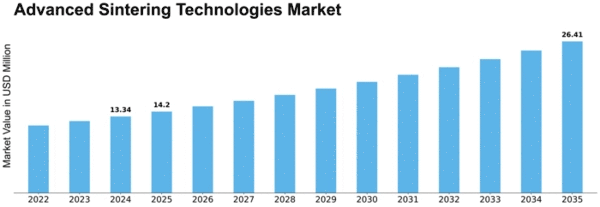

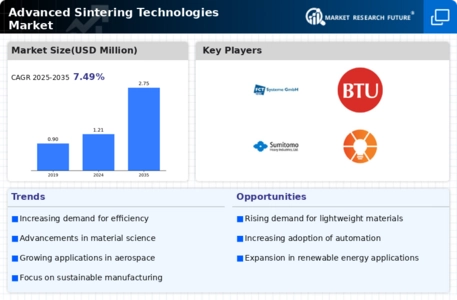
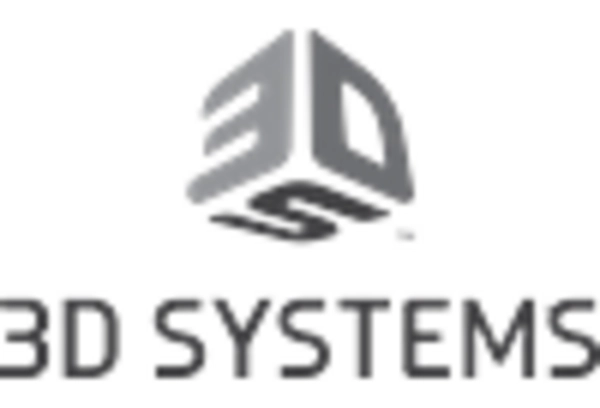

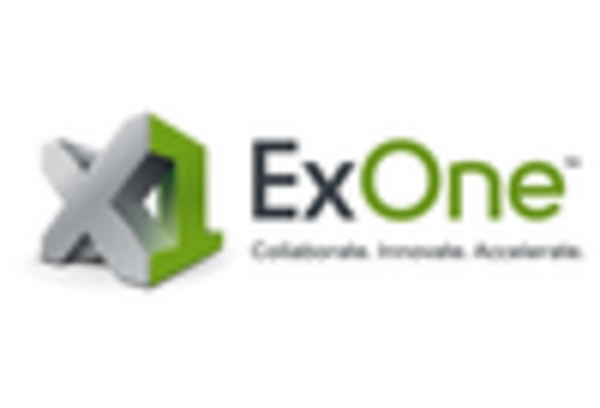
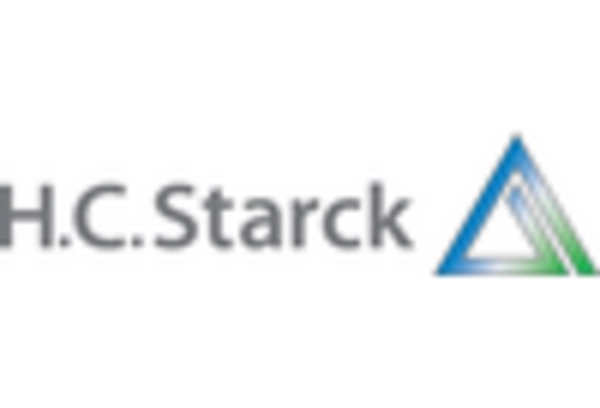

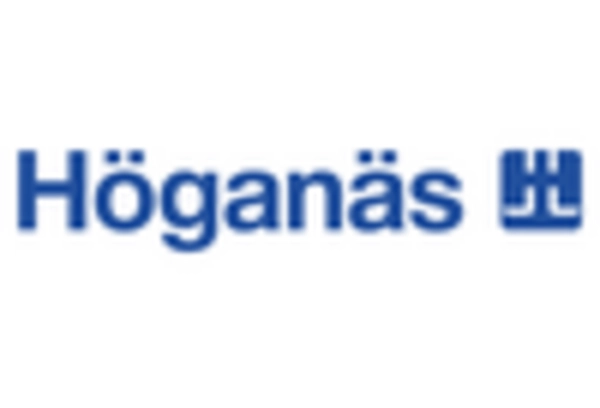









Leave a Comment